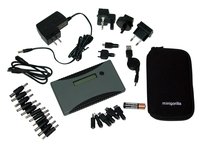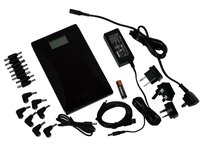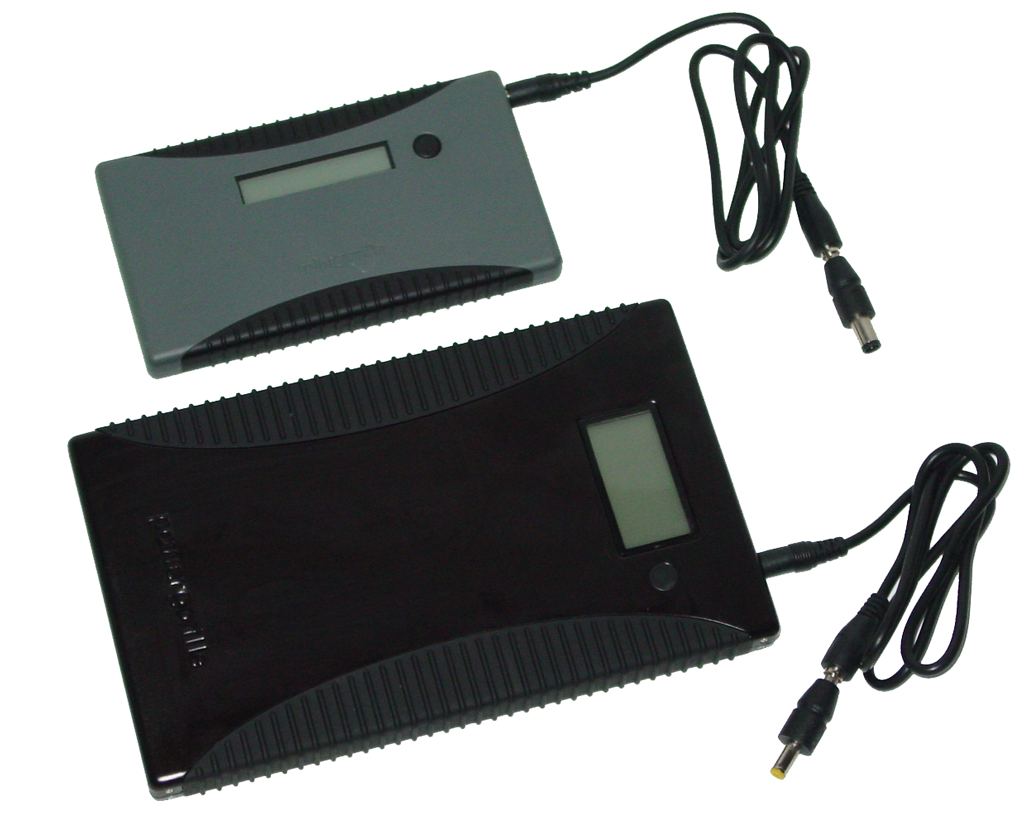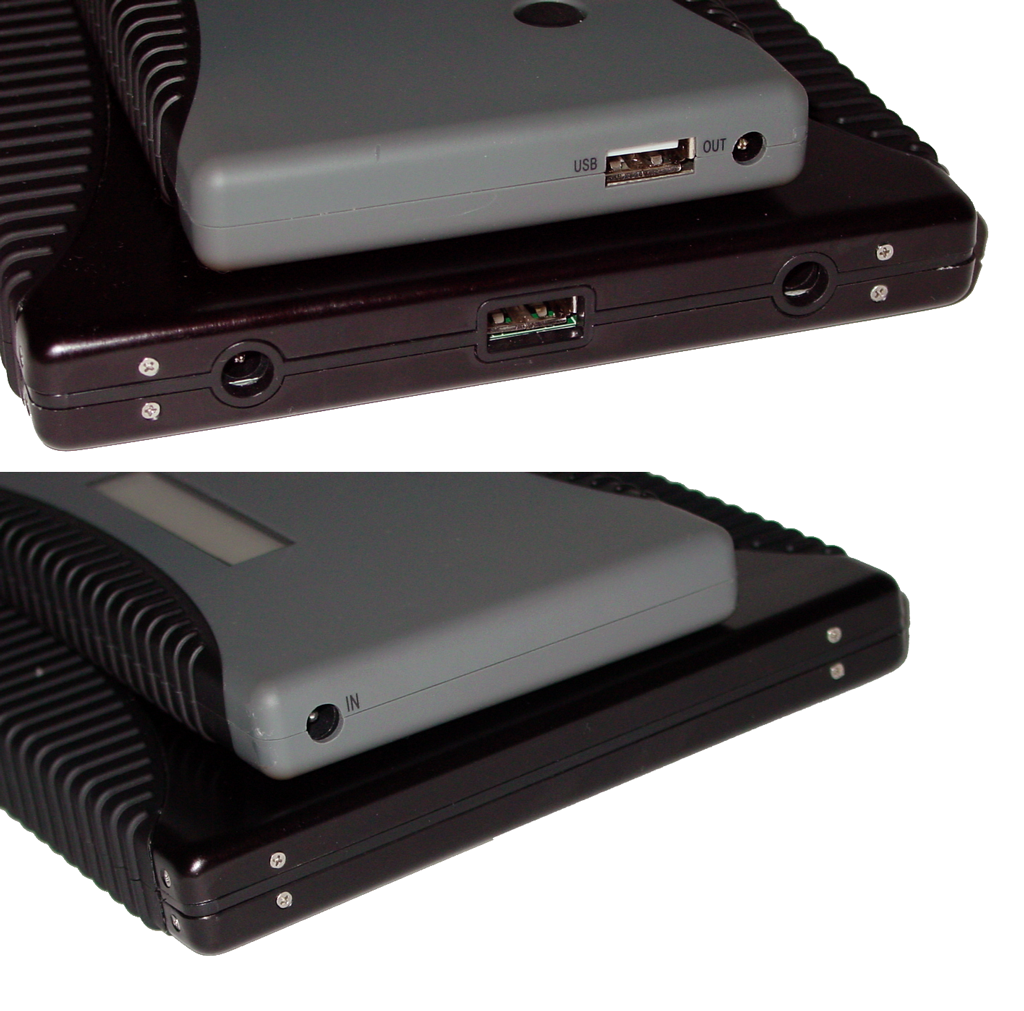External Battery Roundup: Stay Away From The Wall Socket
PowerTraveller PowerGorilla And MiniGorilla
Straight out of the UK, we have PowerTraveler’s PowerGorilla and MiniGorilla. I’m not sure about the motivation behind this company’s fascination with primates, as most of its products are named after gorillas or monkeys, but PowerTraveler is trying to aim its products toward folks living an active lifestyle.
Both batteries employ a rugged design, similar to those from Bruton. There are some differences, though. We'd argue that the PowerGorilla was built with less impact resistance in mind.
PowerTraveller saddled rubber bumpers on the sides of both batteries, but only the MiniGorilla is encased in rubberized plastic. Meanwhile, the PowerGorilla is housed in an aluminum shell.
Besides Electryovaya’s PowerPads, the PowerGorilla and MiniGorilla are the only other batteries in this roundup to use an LCD. But disappointingly, this battery gauge is a bar meter. The LCD clearly wasn’t designed with the meter in mind. Instead, it provides a way for you to select the correct voltage. If your notebook is already connected, simply hit the On/Off button to cycle through the options. Once you get to a compatible voltage, the battery detects the current drain and blinks to indicate its locked selection.
I discovered this can be a faulty process. Some notebooks trickle drain off of a 16 V charge. If this happens, the battery mistakenly locks into a voltage that doesn’t charge or power your notebook. You need to unplug the external battery pack and cycle manually through to the correct voltage before you plug it in.


Both batteries charge at 16 V with the included chargers, but only the PowerGorilla comes with a set of right-angled input tips, which allows you to charge using your notebook’s stock adapter. With that said, both batteries feature the most complete set of accessories seen in this roundup. The US plug is compatible in Japan and Canada by default, but PowerTraveller also includes the UK and Australia/Europe adapters as well.
Get Tom's Hardware's best news and in-depth reviews, straight to your inbox.
Current page: PowerTraveller PowerGorilla And MiniGorilla
Prev Page Lenmar PPU916 Next Page Tekkeon myPower ALL Plus MP3750, MP3450, MP3450i-
lashabane Excellent article. I had an idea that this stuff was out there but never really bothered to look. If the 4-5 hours I get from my Asus 1215t begins to not cut it, I now know where to look. Thanks!Reply -
zodiacfml I did not understood any of the technical reading especially the part about the desktop PSU.Reply
At one point, it is stated that AC adapters have higher voltage than the battery on a notebook so that it can be charged. Then, how can a external battery damage a notebook's electronics with a higher voltage (only if it's too high)?
It is not stated how to set the external battery voltage correctly. What then is the correct voltage? Correct me but I believe the voltage has to be equal that of notebook battery.
-
burnley14 It's pretty remarkable that after page 2 I could guess who the author of this article was (without looking of course) due to the thoroughness and good grammar/lack of typos. Hats off to you yet again, Mr. Ku. Job well done as always.Reply -
nukemaster zodiacfmlI did not understood any of the technical reading especially the part about the desktop PSU.At one point, it is stated that AC adapters have higher voltage than the battery on a notebook so that it can be charged. Then, how can a external battery damage a notebook's electronics with a higher voltage (only if it's too high)? It is not stated how to set the external battery voltage correctly. What then is the correct voltage? Correct me but I believe the voltage has to be equal that of notebook battery.Your guess is actually right. The battery with its voltage set too high can damage the notebook.Reply
If you need to know the voltage required, you just check on your laptop AC adapter or power brick. It is not always the same as the battery.
For instance, a Compaq R3000 has an 18.5 volt AC->DC(120w) power supply and its battery is only 14.5 volts. The voltage regulators in the laptop(in the charging system) it self cut it down to the needed 14.5-15volts to charge the battery.
Also note that the AC adapter does NOT spit out AC it in fact spits out DC(it has a rectifier to convert AC to DC).
As you can see by this picture(you have to click the link), The adapter takes in AC 120V and spits out DC 18.5V. AC is shown with a ~ and DC with a --_---_-- cant make it on here, but you get the point.
http://img269.imageshack.us/img269/1950/powerw.jpg -
Luscious Quite a different experience on my end testing the Energizer XP8000 and XP18000.Reply
For my smartphone and MiFi, the XP8000 just can't be beat. 5x runtime guarantees me 20+ hours of 3G broadband and week-long phone use. Being barely bigger than a Blackberry, I can effortlessly stash the XP8000 on my belt, and charge my smartphone while I walk.
The XP18000, on the other hand, was a huge disappointment. Using a Toshiba NB305 netbook, it was incapable of recharging the factory 6-cell battery while powered on, and could not provide 2 full charges while powered off. For my usage scenario, that's a failure, as I plug in the external battery when my netbook hits 3% critical, right before Windows does a force shutdown, allowing me to continue working.
Using this deplete-charge-deplete approach SHOULD allow me 14+ hours of continuous power-on time, except that even the beefy XP18000 couldn't get through 1 netbook charge. Had it been capable of providing one full charge powered on, or two full charges powered off, I would have recommended the XP18000 as well.
http://lgponthemove.blogspot.com/2010/07/accessory-corner-3-energizer-xp18000.html -
a_fortiori Nice article. I wonder if these units can be used as a mini-ups for equipment like a NAS, routers and modems. It would be great if you could wire these with the NAS, and be sure that a power outage wouldn't damage the NAS. Considering that the NAS units typically consume much less power than a notebook, these should be able to cover 4-5 hrs of power outage (?) Any thoughts?Reply -
junixophobia shineon2010Very good info , alot of products that im having second thoughts about.Reply
Just buy an automatic inverter that works for hours with a car battery


